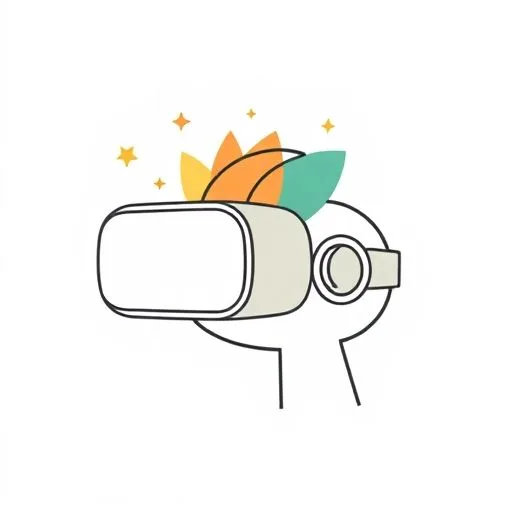
One morning last week, I found myself stirring orange juice with my daughter’s tablet balanced on my knee—welcome to life in the AI era! As a raising kids through AI revolutions, I wonder: how prepare for future tech? McKinsey Trends 2025 show AI amplifying frontier tech. Let’s embrace innovation while preserving human values.
Is Your Child Already Navigating the Tech Revolution Better Than You?

Did you know that 34 countries now have national quantum programs? That 2025 has been declared the ‘International Year of Quantum Science and Technology’ by the United Nations? These headlines might make your head spin, but here’s the truth: your child is already adapting to changes at lightning speed!
Our daughter – like most seven-year-olds – intuitively understands technology in ways that baffle us. She can navigate between educational apps and creative games without needing a manual, and she thinks nothing of asking Alexa for facts while building with blocks. This isn’t a threat to traditional parenting – it’s an opportunity!
The most valuable future belongs to families who can embrace technology as a tool that extends our ability to nurture curiosity and wonder, not replace it.
The McKinsey Tech Trends report emphasizes that artificial intelligence is now a foundational amplifier for other technologies. In our home, we’ve learned to see AI not as competition but as a co-pilot in our parenting journey. When our daughter showed interest in space, we didn’t just get books – we explored interactive solar system apps that respond to her questions this is where future-proof parenting begins!
After seeing how quickly she learns, I couldn’t help but ask myself, what’s next for families like ours? Which Tech Trends Will Change Parent Forever? And How to Prepare

I stumbled on some eye-opening tech trends that had me both excited and a bit nostalgic for simpler days. Take immersive technologies – think AR/VR for education and creativity. Rather than seeing this screen time as the enemy, imagine using AR to bring dinosaurs to life during dinner conversations or using VR to explore museums across the globe without leaving your living room!
Our family has discovered that balancing moderate tech use with face-to-face connection actually strengthens our bonds and creates shared memories. Another transformative trend? The rise of ‘agentic AI’ – systems that can understand goals and take actions to achieve them. Yes, this sounds complex, but in parent-speak? It’s like having a personalized assistant for everything from finding age-appropriate content to suggesting family activities based on everyone’s mood.
The key is developing our own ‘AI literacy’ alongside our children. Instead of fearing what we don’t understand, we learn together. When our daughter noticed how AI could help her create stories with art apps, her eyes lit up with possibilities! That’s the spark we want to nurture – the ability to use technology as a creative tool rather than just a passive entertainment device.
As we cheer on her curiosity together, we’re reminded that kindness and hope are the best guides on any journey.
How Can Your Family Find the Perfect Tech Balance?

Let’s talk honestly about the challenges: Online safety is a huge concern, as highlighted in the McKinsey analysis of cybersecurity foundations. The endless stream of new educational apps promising to make your child a genius can feel overwhelming. And when do we draw the line between preparation and pressure? Here’s what’s worked for us:
First, we established ‘tech-free zones’ and ‘tech-free times’ – like dinner table conversations without devices. This sacred space for connection reminds everyone what truly matters. Second, we treat technology exploration like any other interest: with curiosity and without judgment.
When our daughter became fascinated with building robots (inspired by those Nvidia Jetson technologies mentioned in the report), what if we saw this as a natural extension of her creative interests? We didn’t just buy kits – we visited libraries, found YouTube channels made by kid inventors, and connected with other families who shared this interest. The result? Not only has she developed problem-solving skills, but we’ve discovered the joy of learning together!
What Skills Will Future-Proof Our Tech-Savvy Kids?

When we think about preparing our children for an uncertain future, it’s tempting to focus only on technical skills. But that study reminds us that the most valuable futures will require uniquely human qualities: creativity, empathy, ethical judgment, and the ability to learn continuously.
In our family, we’ve discovered that technology can actually amplify these human strengths rather than diminish them. For example, when our daughter used an art app to reimagine traditional stories with modern characters, she wasn’t just learning digital design – she was developing creative thinking and cultural awareness in ways that books alone couldn’t provide.
Another crucial future-proof skill? Digital citizenship. The analysis touches on identity management as part of cybersecurity foundations. In our home, this translates to conversations about treating online friends with the same kindness as offline ones, understanding that digital footprints last forever, and recognizing that technology should serve humanity, not the other way around.
Perhaps the most important future-proof skill we can cultivate is adaptability – the confidence that we can learn anything necessary when needed. Our daughter has seen her dad tackle new technologies with sometimes embarrassing results and always enthusiastic persistence. This practice of learning out loud actually demonstrates resilience better than any lecture could.
The future belongs to those who can embrace change while holding onto timeless values. With our guidance, our children can be both tech-savvy and soul-deep – capable of using advanced tools to create, connect, and contribute to a better world!
Source: McKinsey Breaks Down 13 Tech Trends For The Year Ahead, Forbes, 2025/09/12
